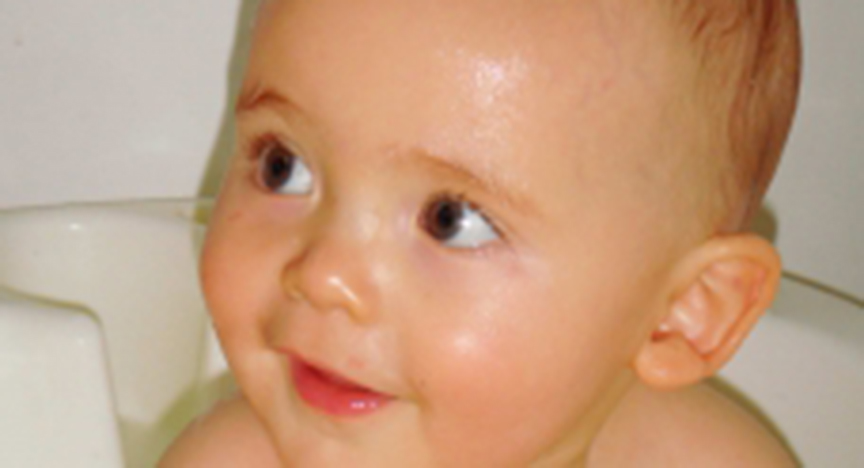
Liam
Our son, Liam (pictured), was a healthy, bright, beautiful boy born in February 2012. We could never have imagined at the time that just 11 months later we’d lose him so suddenly – but that’s what sepsis can do.
We hadn’t heard of sepsis before Liam got sick but we quickly learned that is an overwhelming infection of the body. It is rare, however it is very real. It is life-threatening and it can take a life extraordinarily quickly if not recognised and treated early.
Liam died within 30 hours of being diagnosed with a middle ear infection by a GP. We’d taken him to the doctor and then to our local regional hospital because we knew he wasn’t his usual self. He had fever, vomiting, a fast heart rate and was not as active and alert as he normally was.
We returned to the hospital some four hours after the first visit and were admitted overnight because Liam continued to have rigor (shivers due to high fever) and a racing heart rate. We were discharged a second time with a course of antibiotics, and advised to control Liam’s temperature with Panadol and Voltaren. The next day, after being assured it was OK, we drove from our home on our property in Central Queensland to Mooloolaba, where we were to meet family for a holiday.
Despite the recommended treatment, the following evening, Liam had seriously deteriorated, so we took him to the closest hospital. However, just after midnight on 6 January 2013, Liam was gone.
We later learned that Liam’s middle ear infection had been caused by a very aggressive bacteria – pseudmonias aeuriginosa; which does not normally affect healthy individuals. A gene sequencing study also revealed that Liam had a previously undiagnosed immune deficiency, XLA (or X-Linked Agammaglobulineamia). It’s a rare genetic disorder (affecting one in 200,00 newborns) that weakens the body’s ability to protect itself against infection. This leaves people with XLA at even higher risk to develop severe, life-threatening bacterial infections – like sepsis.
Unfortunately for Liam, there was no way we or his treating doctors could have known this, as he had never developed a severe infection until the day he became septic. He had been healthy up until his death because he had maternal antibodies on board via the placenta before birth and then later from the breast milk he received.
The loss of a child is the ultimate violation of the order of life. We feel the devastating loss of Liam every day. It’s rare that he is not at the front of our mind and he will always be in the centre of our hearts. However, life must go on and we count our many blessings every day.
If we had known about sepsis, and had asked the question “Could it be sepsis?”, perhaps Liam might still be here with us. We will never know the answer to that question, but we can try to help other families by helping to raise awareness of sepsis.
Some of the key warning signs and symptoms of sepsis to look out for are mottled, blue or pale skin; fits or convulsions; a non fading rash; decreased alertness, arousal or activity; cool hands and feet; a weak cry; grunting; laboured or fast breathing; fever; rigors (shivers); and a fast pulse. If your child has one or more of these, please don’t hesitate to go to your nearest emergency department or call 000. An early diagnosis of sepsis and timely treatment is critical.
I want parents to be confident that they do know their child best. They are the ones best able to recognise if their child is not improving despite medical treatment.
If you ever feel your child is suffering from an infection and is not improving or getting worse, or if you are at all concerned about their health, just ask ‘Could it be sepsis?”
It’s only four words but they might save your child’s life.